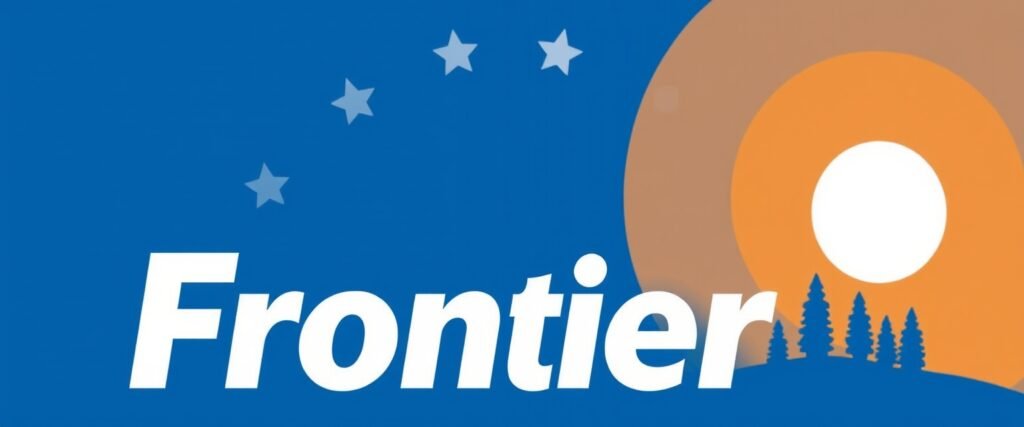Frontier vs. AT&T: Comparing Internet Services

Choosing the right internet service provider (ISP) is crucial in today’s digitally driven world. Two of the most well-known ISPs in the USA are Frontier Communications and AT&T. Both offer a variety of internet plans, leveraging different technologies to cater to different needs. In this comparison, we’ll break down the prices, plans, and speeds offered by Frontier and AT&T to help you make an informed decision. See more details..
1. Overview of Frontier and AT&T
Frontier Communications

Frontier provides DSL and Fiber Optic Internet services across 25 states, with a strong presence in rural and suburban areas. Known for offering affordable pricing for fiber internet in regions that may not have many high-speed alternatives, Frontier has positioned itself as a good choice for those looking for a combination of affordability and speed.
- Coverage Areas: Primarily in rural and suburban regions such as California, Texas, and Florida.
- Technology: DSL and Fiber Optic Internet
- Best For: Rural and suburban households seeking fiber internet with fast symmetrical speeds at reasonable prices.
Details….
AT&T

AT&T is one of the largest telecom companies in the USA, offering DSL, Fiber, and Fixed Wireless Internet services. AT&T has a significant footprint, especially in urban and suburban areas, with its fiber internet services being widely praised for speed and reliability.
- Coverage Areas: Predominantly in urban and suburban areas but also available in some rural locations through its DSL and fixed wireless offerings.
- Technology: DSL, Fiber Optic, Fixed Wireless
- Best For: Users in urban and suburban areas who need high-speed fiber internet with strong customer support.
Details…
2. Price Comparison
Pricing is a crucial factor when selecting an internet provider. Frontier and AT&T offer competitive pricing, but there are important differences in their pricing structures depending on the technology available (DSL vs. Fiber).
Frontier Pricing
Frontier’s pricing varies depending on whether customers opt for DSL or fiber. Generally, Frontier’s DSL pricing is lower but offers slower speeds, while fiber plans offer more value for speed.
- Frontier DSL Plans:
- Basic DSL: $49.99/month for speeds up to 25 Mbps.
- Enhanced DSL: $59.99/month for speeds up to 115 Mbps (availability depends on the region).
- Frontier Fiber Plans:
- Fiber 500: $49.99/month for speeds up to 500 Mbps (symmetric download and upload speeds).
- Fiber 1 Gig: $69.99/month for up to 1 Gbps (symmetric download and upload).
- Fiber 2 Gig: $149.99/month for up to 2 Gbps.
Note: Prices may vary based on location, promotional rates, and additional fees like taxes.
AT&T Pricing
AT&T offers different pricing tiers for its DSL, Fiber, and Fixed Wireless plans. Fiber plans tend to be more competitively priced in comparison to DSL offerings and generally offer faster speeds for the price.
- AT&T DSL Plans (called AT&T Internet):
- Internet Basic: $55/month for speeds up to 100 Mbps (depending on location).
- AT&T Fiber Plans:
- Fiber 300: $55/month for speeds up to 300 Mbps.
- Fiber 500: $65/month for speeds up to 500 Mbps.
- Fiber 1 Gig: $80/month for speeds up to 1 Gbps.
- Fiber 2 Gig: $110/month for speeds up to 2 Gbps.
- Fiber 5 Gig: $180/month for speeds up to 5 Gbps.
- Fixed Wireless Plans:
- Fixed Wireless Internet: $69.99/month for speeds up to 25 Mbps (in rural areas).
AT&T Fiber tends to offer faster plans at lower prices compared to Frontier, especially when looking at gigabit or higher-tier plans. However, Frontier is often more competitive in rural regions where AT&T may offer slower DSL or Fixed Wireless connections.
3. Speed Comparison
The speed of your internet service determines how well it supports activities like streaming, gaming, and working from home. Here’s how the speeds stack up between Frontier and AT&T.
Frontier Speeds
- DSL Speeds: Frontier’s DSL service ranges from 25 Mbps to 115 Mbps, which may be sufficient for basic online activities like web browsing and standard video streaming, but it can struggle with high-data activities such as 4K streaming or gaming.
- Fiber Optic Speeds: Frontier’s fiber plans provide much faster speeds, starting at 500 Mbps and going up to 2 Gbps. One key advantage of Frontier’s fiber service is its symmetric upload and download speeds, which make it ideal for users who need high upload speeds for tasks like cloud backups, live streaming, and video conferencing.
AT&T Speeds
- DSL Speeds: AT&T’s DSL service offers speeds of up to 100 Mbps depending on the distance from the network hub. In rural areas, these speeds may be lower, but they are generally sufficient for basic internet use.
- Fiber Optic Speeds: AT&T’s fiber plans range from 300 Mbps to 5 Gbps. Like Frontier, AT&T’s fiber plans offer symmetric speeds. However, AT&T has an advantage in offering higher maximum speeds, including their top-tier 2 Gbps and 5 Gbps plans, which are excellent for households with multiple heavy users.
- Fixed Wireless Speeds: AT&T’s Fixed Wireless service provides speeds of up to 25 Mbps, mostly in rural areas where other services may not be available.
4. Additional Features and Benefits
Frontier
- No Data Caps: Frontier offers unlimited data on all its plans, including DSL and fiber, meaning there are no overage fees or speed throttling, even for heavy users.
- No Contract Required: Many of Frontier’s plans are contract-free, giving customers flexibility without worrying about early termination fees.
- Price Guarantee: Frontier often includes a price guarantee for fiber customers (e.g., a 2-year price lock).
AT&T
- No Data Caps on Fiber: AT&T Fiber plans also offer unlimited data, making it a strong choice for heavy internet users. However, its DSL and Fixed Wireless plans come with data caps, usually around 1 TB.
- Contract-Free Fiber Plans: AT&T Fiber does not require contracts, providing flexibility similar to Frontier.
- Bundled Services: AT&T offers bundles with TV (AT&T TV) and phone services, providing discounts for customers who want multiple services from one provider.
5. Customer Service and Satisfaction

Frontier
Frontier’s customer service has been a point of contention for many customers, especially with DSL services. Users have reported slow response times and technical issues, particularly in rural areas where the infrastructure may be outdated. However, customers on Frontier’s fiber plans tend to report higher satisfaction due to more reliable performance.
AT&T
AT&T’s customer service has a better reputation, especially for its fiber offerings. The company provides 24/7 support and has extensive online resources for troubleshooting. AT&T Fiber has high marks for reliability and speed, making it one of the more reliable options in urban and suburban areas.
6. Pros and Cons
Frontier Pros
- Affordable fiber internet plans with symmetric speeds.
- No data caps or contracts for most plans.
- Good coverage in rural and suburban areas where other fiber services are not available.
Frontier Cons
- DSL service is slower and less reliable.
- Limited fiber availability in rural areas.
- Customer service is often cited as lacking.
AT&T Pros
- Extensive fiber coverage in urban and suburban areas.
- Symmetric speeds for fiber plans.
- High maximum speeds up to 5 Gbps.
- Bundling options with TV and phone services.
AT&T Cons
- DSL and Fixed Wireless plans have data caps and slower speeds.
- Fiber plans can be more expensive at the higher speed tiers.
- Availability of fiber is limited in rural areas.
Conclusion: Frontier vs. AT&T — Which One Is Better for You?
The choice between Frontier and AT&T depends heavily on your location and internet needs.
- If you live in a rural area, Frontier might be the better option, especially if you have access to their fiber plans. Frontier’s symmetric speeds and lack of data caps make it an attractive choice, though their DSL service may be slower.
- If you live in an urban or suburban area, AT&T Fiber is the better option due to its wider availability, faster speeds, and better customer service. AT&T also offers more high-speed options, with their 5 Gbps plan standing out for large households or power users.
For most users, AT&T’s fiber internet offers the best combination of speed, reliability, and customer satisfaction, especially in areas where fiber is available. However, Frontier may provide better pricing and rural coverage for fiber customers in less densely populated regions. (Plans, Prices, and Speeds)
Choosing the right internet service provider (ISP) is crucial in today’s digitally driven world. Two of the most well-known ISPs in the USA are Frontier Communications and AT&T. Both offer a variety of internet plans, leveraging different technologies to cater to different needs. In this comparison, we’ll break down the prices, plans, and speeds offered by Frontier and AT&T to help you make an informed decision.
Frontier vs. AT&T: Comparing Internet Services (Plans, Prices, and Speeds)
Choosing the right internet service provider (ISP) is crucial in today’s digitally driven world. Two of the most well-known ISPs in the USA are Frontier Communications and AT&T. Both offer a variety of internet plans, leveraging different technologies to cater to different needs. In this comparison, we’ll break down the prices, plans, and speeds offered by Frontier and AT&T to help you make an informed decision.
